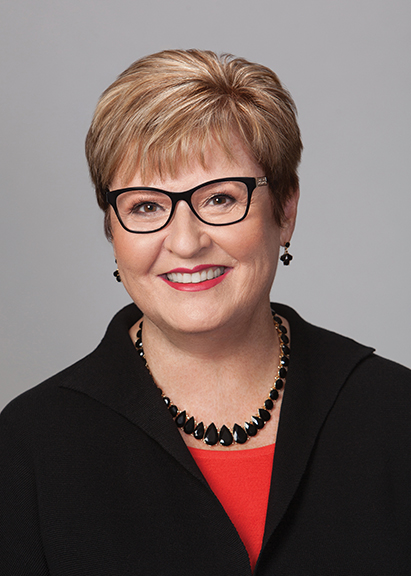The Evolving Role of Clinician Managers
Healthcare has seen dramatic changes over the past 40 years. The shift from a retrospective payment system to DRGs (diagnostic-related groups) in the 1980s changed the way hospitals and healthcare providers were reimbursed for care. Nearly nine years ago marked the passage of the Affordable Care Act, beginning the ongoing transition to value-based care. In 2013, the Association for Health Care Resource & Materials Management launched its CQO (cost, quality, outcomes) movement to help guide healthcare supply chain through the changing environment. The Institute for Healthcare Improvement (IHI) refers to this transition as the “triple aim” of healthcare—improving the care experience, improving population health and reducing per capita costs. Left to decipher the details of care delivery amid these significant changes are clinical managers—the overseers and supervisors of hospital departments, such as surgery, nursing, pharmacy, critical care units and physical therapy.

“Years ago, clinical managers were only expected to know the clinical aspects of their jobs,” explains Judith Pins, RN, MBA, MHRD, president of Pfiedler Education, a continuing medical and nursing education company. “Today, however, you cannot be in any type of clinical management position without also having a thorough knowledge of the financial and business aspects of a hospital. Clinical managers have to stay informed about the healthcare industry and ongoing changes to reimbursement because of the impact on care delivery.”
Under Pressure
A Moody’s Investors Services report from December 2018 suggests that not-for-profit hospitals will continue along their same course in 2019, with expenses continuing to outpace revenues, meaning hospitals will see even more margin compression than they have in the past.
As clinical managers move into 2019 and beyond, it means they must shoulder more of the burden of reducing costs and increasing revenue. “Everyone in the healthcare industry is under tremendous pressure to cut costs,” Pins adds. “We need clinical managers who can streamline processes, drive out costs and become even more efficient.”
That’s easier said than done considering many of the other struggles these managers are dealing with:
- Staffing issues continue to plague the industry, with almost 31 percent of hospital leaders reporting they can’t find enough candidates to fill open positions.
- 56 percent of healthcare organizations still don’t have a comprehensive data governance plan in place, despite the investment and interest in big data. A data governance plan—an organization-wide framework for managing a patient’s health information from the moment it’s entered into the system until well after the patient is discharged—is essential for helping healthcare facilities achieve the goals of the IHI’s triple aim.
- C-suite, supply chain and clinical leaders don’t always agree on the same goals. For example, consider a scenario involving a switch in surgical tools. The chief financial officer and director of supply chain may want to use a new tool or eliminate products to save money. A clinical manager is the go-between and responsible for communicating this change to the physicians and nurses who use those products daily. There’s likely going to be resistance from the clinicians, and the clinical manager is at the center of that shift.
Honing the Tools
Challenges like these can certainly seem insurmountable. But Pins suggests clinical managers can overcome the hurdles by targeting their already-strong skillset toward the following three priorities:
1. Supporting colleagues through the stress of change.
Healthcare organizations are required to constantly adapt to modifications in medical care, technology, evolving reimbursement models, patient expectations and more. This pressure can lead to “change fatigue,” or a tendency to distrust change from organizational leadership. It’s easy to get frustrated with what seems like constant shifts, whether it’s switching to a new brand of surgical gloves in the operating room or modifying the way performance reviews are handled.
However, adaptation is necessary for a hospital’s survival, and clinical managers can be the agent of change to ease their colleagues into new processes and procedures. They have to learn to be proficient at encouraging and helping their teams navigate ongoing modifications in their departments. They can start by focusing their efforts on communication, stress management and recognition of employee achievements.
However, C-suite support is essential for clinical managers to lead more proactively. It’s in the hospital’s best interest to encourage this new structure for clinical managers since they are a “lynchpin in the success of a change initiative,” according to Prosci, a change management consulting organization. In Prosci’s 2018 study, “Best Practices in Change Management,” research participants identified support and engagement from middle management as the top contributor to change management success. Hospital leadership should ensure that clinical managers have the skills and tools they need to successfully lead their teams through such efforts.
2. Learning to interpret and analyze data.
According to a 2016 article in Becker’s Hospital Review, the pressure to control the increasing costs of medical devices has led many healthcare providers to demand more information before making purchase decisions, such as proof of product superiority from manufacturers.
In the example of a hospital considering a new, $1,000 stent, a manufacturer may present clinical studies that prove the product is safe for coronary artery procedures, but clinicians will also want to see that this product produces better outcomes than the stent they’re currently using. So now, clinical managers must be able to gather and analyze clinical data to make evidence-based product decisions. They’re involved in the supply chain decision-making process, and that was never the case before. But now, the clinical point-of-view on such decisions has become more vital and valued.
3. Embracing innovation.
In a competitive and consumer-oriented healthcare environment, hospitals are challenged to find novel solutions to deliver care. Innovation is often associated with new tools and technologies, but it also applies to the implementation of new processes, clinical workflows and training methods.
A 2017 article from the New York Times suggests that innovation can be as simple as a trauma team leader wearing an orange vest to be more easily spotted in a hectic emergency room or a new pain scoring system using toy-like objects in a pediatric unit.
Clinical managers need to learn ways to bring innovation to their teams. They can no longer say, “This is the way we’ve always done it.” Hospitals are often the largest employer in their towns, but that doesn’t mean competitors aren’t looking to replace them. “Look at Walgreens and CVS Pharmacy offering medical services, and retail giants like Amazon and Walmart entering healthcare. Either disrupt the disrupter or you will be disrupted,” Pins says.
As naturally good problem-solvers in their daily jobs, clinical managers are often the individuals in a hospital in the best position to identify potential innovations or the reinvention of processes such as reducing the 45 minutes it takes to admit a patient to a room, or decreasing the 20 minutes it currently takes to clean a patient room. Their roles as department leaders and their experience in both clinical and financial settings often positions them as the people with the most realistic, workable ideas.
The Education Solution
The value of continuing education for clinical managers—whether through product training or educational conferences and meetings—cannot be overstated, Pins explains.
“As hospitals try to cut costs, education may not always be a top priority,” she says. “There’s a time and place to save, but also to spend money on educational resources.”
When learning about new products, Pins suggests making use of the resources available through HealthTrust such as clinical evidence or new technology reviews. When making non-HealthTrust contracted purchases, clinical managers should ask prospective suppliers to provide both brand-specific resources and accredited, non-brand-specific resources to help them make evidence-based decisions.
Pins also points to the need for multidisciplinary meetings and conferences that invite physicians, pharmacists, nurses and other clinicians to learn about and find solutions for the same topic together. “We believe that this actually improves patient care,” she says.
“I’m consistently impressed with the educational summits presented by HealthTrust, such as the 2017 perioperative pain collaboration summits,” she adds. “Groups of clinicians from across the membership came together to discuss pain and, specifically, how to decrease opioid addiction. There’s great value in this kind of collaboration.”
Pfiedler Education is the accredited provider of continuing education credits for HealthTrust University Conference, member summits and webinars throughout the year. Learn more about HealthTrust’s educational offerings at healthtrustpg.com/education.
Share Email Management Matters, Operations, Q1 2019, Teamwork Tools





